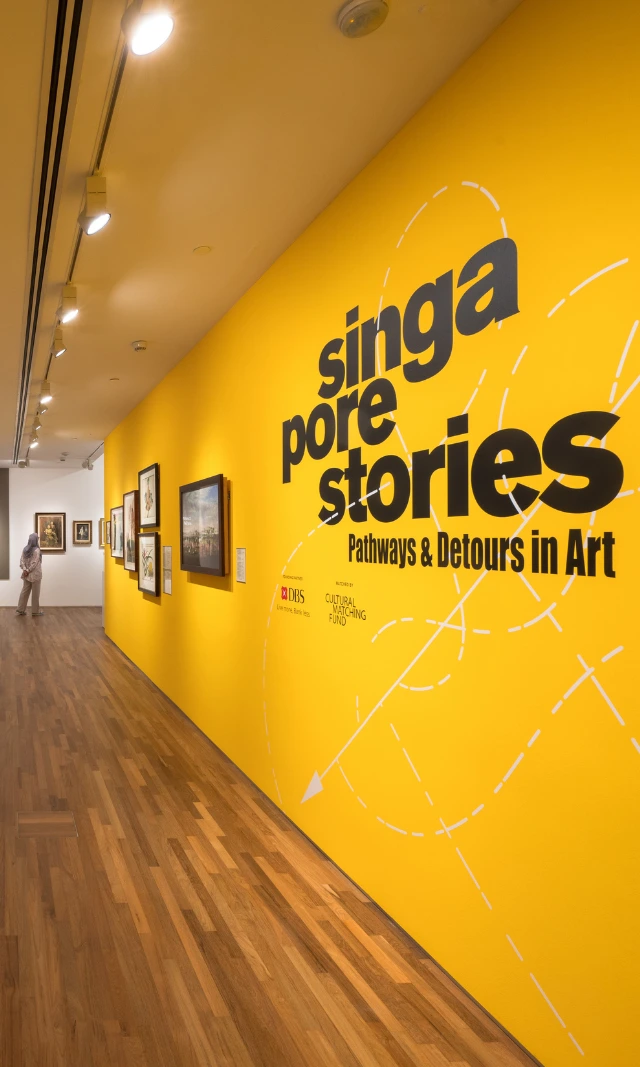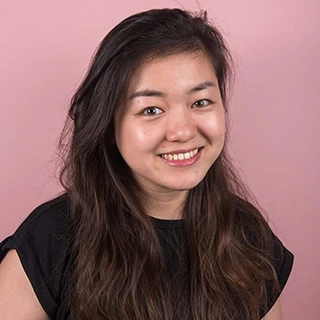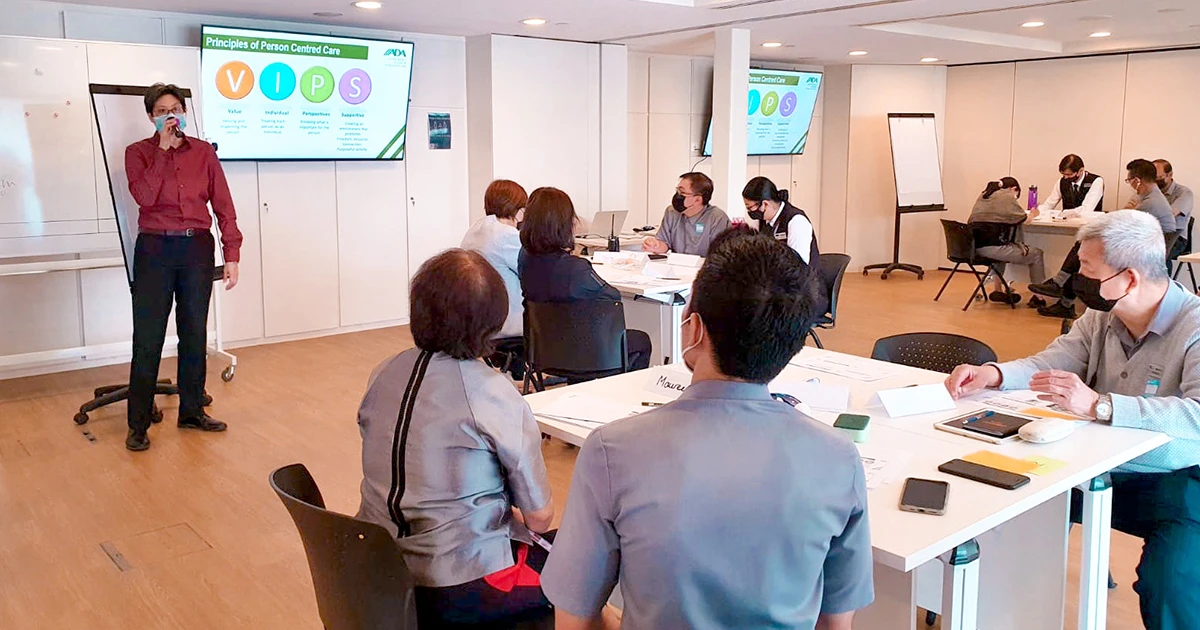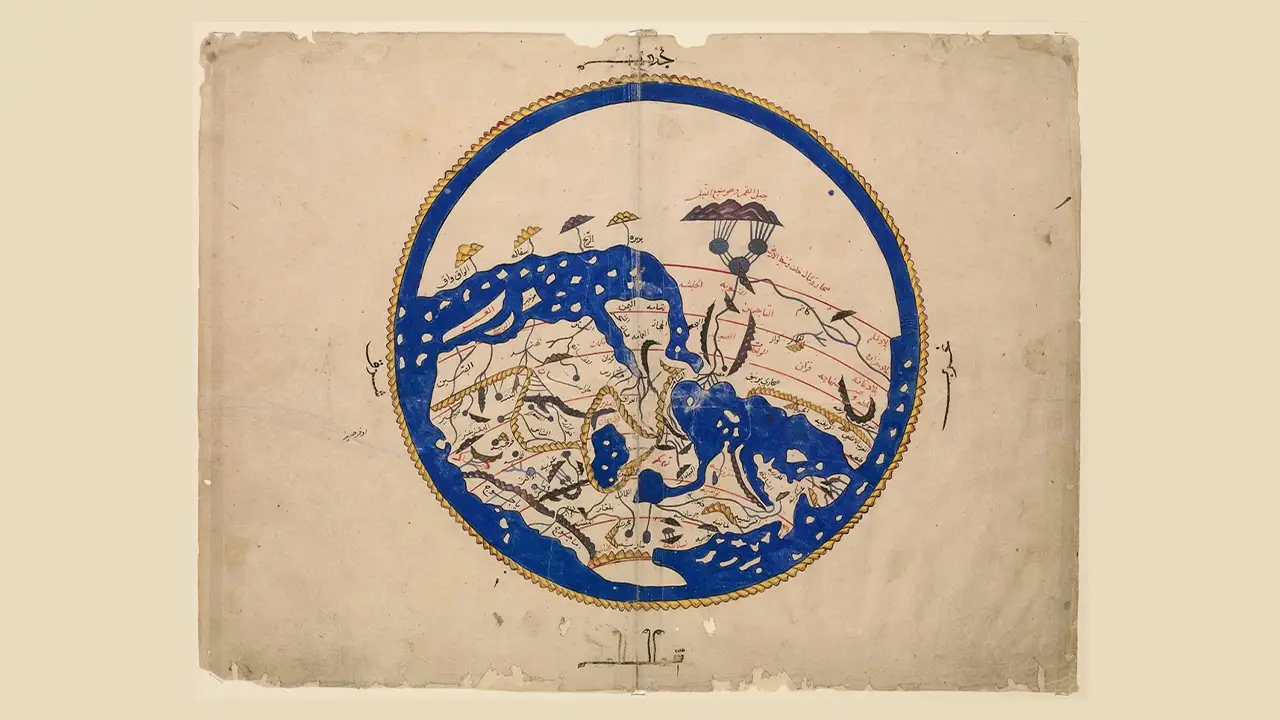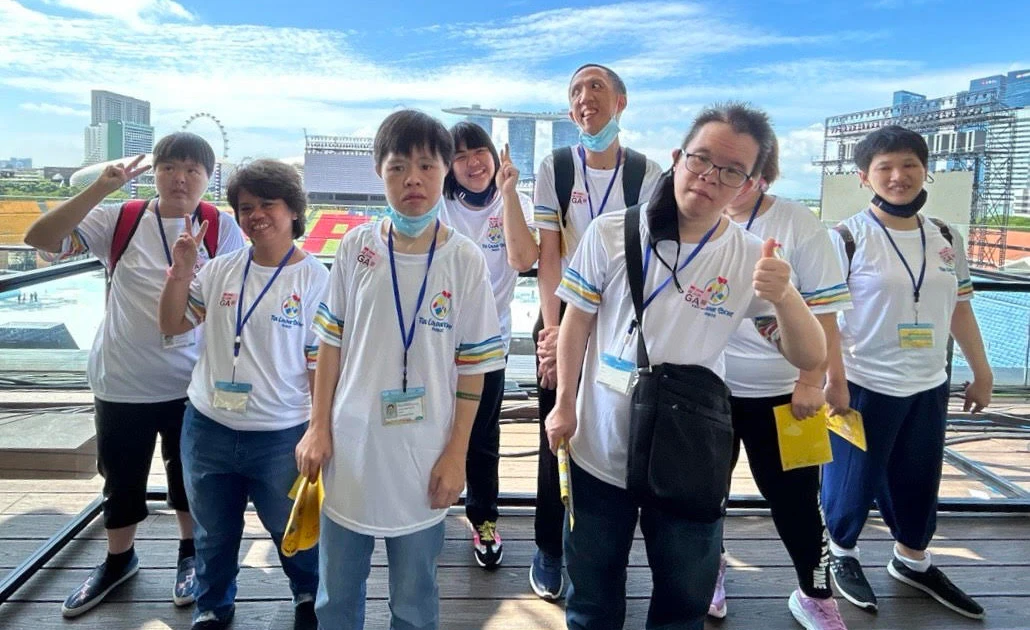Volunteer Voices: Tan Sok Oon, Tan Sok Kiang and Jeff Crowe
When Sok Kiang first found out about National Gallery Singapore in 2015, she was residing overseas with her husband Jeff. The couple moved back to Singapore in 2016 and immediately signed up to volunteer at the Gallery with her sister, Sok Oon. Yang Yilin (Senior Executive, Community & Access) shares their Volunteer Voices.
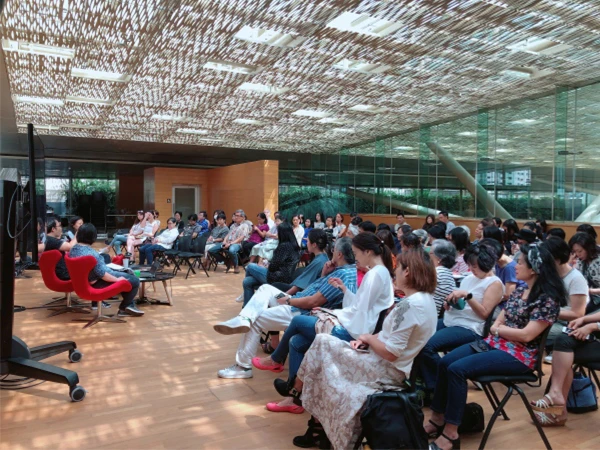
When Sok Kiang first read about the opening of National Gallery Singapore in 2015, she was residing overseas with her husband Jeff. Excited at the prospect of volunteering in the Gallery, she immediately registered for the Best Friends of the Gallery (BFG) Programme when the couple moved back to Singapore in 2016. Along with Jeff, Sok Kiang even managed to rope in her sister, Sok Oon, to volunteer together.
When the trio came for their first BFG training session, they were disoriented by the sheer scale of the building. After undergoing training to become an Individual Volunteer, they were able to help visitors as wayfinding volunteers and ushers at guided tours and exhibition openings. Their exposure to art and art enthusiasts kindled their interest in the Gallery’s rigorous docent training programme. Docents are guides with extensive knowledge of the Gallery’s collection and require additional training. With 3 years of guiding under their belts, Sok Oon, Sok Kiang and Jeff are now experienced docents. They may have just taken you on one of the free tours around the Gallery.
In addition to their full-time jobs, Jeff and Sok Kiang volunteer on the weekends while Sok Oon commits herself to volunteering at organisations around Singapore, so much so that she needs a meticulous schedule to organise her time! The three of them shed some light on their journey as volunteers in the Gallery.
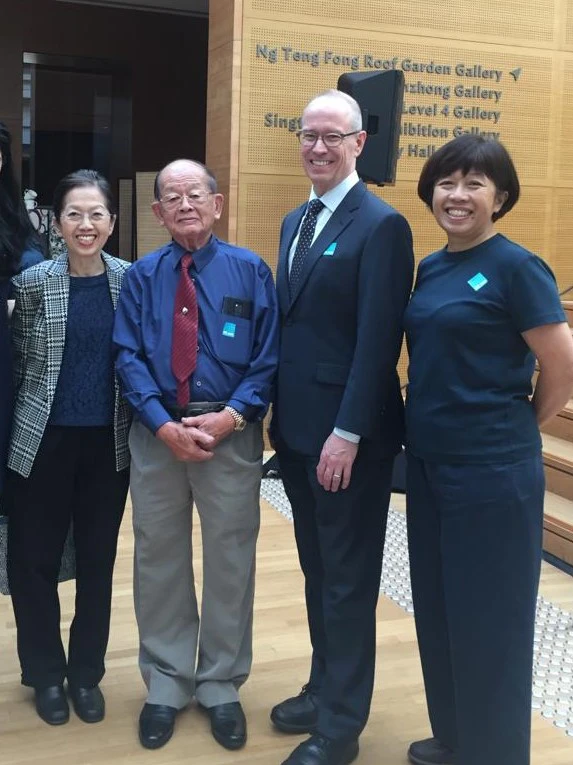
How it began
Sok Kiang: When the National Gallery Singapore opened in 2015, Jeff and I were living and working overseas because of Jeff’s job posting. I remember reading about it in a double page feature in the newspaper. That’s when I decided that if Jeff was to be posted to Singapore, I would volunteer at the Gallery. The next year, he was posted here. Back in Singapore, Sok Oon came to visit me one day when I was in the midst of registering as a volunteer at the Gallery, so she asked me to put her name down as well. We didn’t know how it would turn out. After two weeks, the Gallery invited us to their mass volunteer recruitment drive. Even though Jeff didn’t register with us, he attended the recruitment drive as well. We didn’t register as docents as the first docent recruitment had already ended, but all three of us started as Individual Volunteers under the BFG Programme.
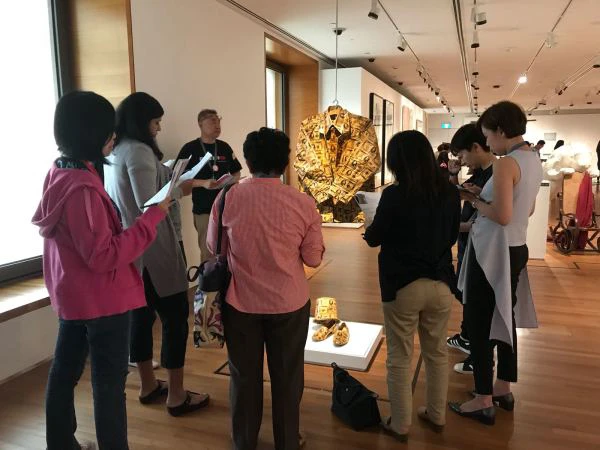
Becoming a docent
Sok Oon: Before becoming a docent, I had no idea about modern art and was scared to approach it. I didn’t know how to look at it: got square lah, got line lah, so many art movements! I assisted docent-led tours when I was an Individual Volunteer, which was when I got inspired read up on artists like Liu Kang. My practice of Chinese calligraphy made it easier for me to relate to first-generation Nanyang artists. From assisting other docents as an Individual Volunteer, I found that a good guide is able to effectively digest and organise information to present to visitors. As long as you can inject passion into your tour, it’s actually not that difficult to talk about art.
Sok Kiang: Jeff and I already had an interest in art but knew less about architecture. Our training course on the history of City Hall and the former Supreme Court buildings helped me rediscover Singapore as I did not realise how much our urban and architectural landscape had transformed. When the Gallery recruited its second batch of docents, all three of us registered and underwent training together. Training to be a docent is an extensive process, including assessment quizzes and orientation of the Gallery’s two monumental buildings. It was a kiasu deep dive into art!
Jeff: The first batch of docents were trained without setting foot in the building as it had not been completed. They were digesting all this knowledge with no idea of where paintings exhibited! We were the first batch who got to experience the building as part of our training. I remember the first orientation – the auditorium was full!
On volunteering together
Sok Oon: We seem to have more common topics after volunteering together. We would discuss the people we’ve met, exhibitions we’ve seen in the Gallery and other museums over lunch or dinner. The Gallery also organises BFG engagement sessions for its volunteers to go on fellow docent-guided tours in different exhibitions, like the most recent Guo Pei: Chinese Art & Couture at the Asian Civilisations Museum. A lot of materials were provided for us to engage in disciplined study and independent research. We attend trainings when we can but occasionally do miss a session. But because we do it together, we help each other out.
Sok Kiang: We also serve as a convenient back up when we have scheduling clashes. If one of the assignments is arranged for when I am overseas, I would ask Sok Oon or Jeff to replace me. If we volunteer together on the same day, we typically head out to get a drink afterwards. We’ve also made friends from our docent training groups so when we get the chance, we like to catch up with them too.

On guiding
Jeff: Even though we were equipped to look and talk about art after our trainings, what I’ve found is that people respond a lot more to little stories about the artist and their background. So I started accumulating historical titbits about the artists. People perk up when they hear these. I’ve also gathered stories from observing other docent-led group tours. At one of the school tours, a group of 6- and 7-year olds were admiring Liu Kang’s Life by the River when the docent asked, “What do you see?” The children responded in the usual way, describing the people and animals by the river. But one girl asked, “Why are all the doors and windows open?” It was a surprising question that made everyone reflect on what it means to live in a kampong, a time without technological means of security; when everyone looked out for each other.
On another occasion, a docent was trying to get children to notice the National Gallery’s logo, comprised of two rectangles that form the building’s silhouette. He pointed to their little admission stickers and one little boy perked up and said, “Mosquito patch!” Due to my work schedule, I never guide school groups but these are observations that I always share. When you’re guiding, people tend to respond to such stories, so you start accumulating them.
Sok Kiang: I guide a lot of community groups, so the stories that resonate with these groups of visitors differ with their age and background. You get these “aha!” moments when they personally relate to a particular work of art.
Sok Oon: I remember guiding a group with wheelchair users who were able to visit the Gallery because of the free bus service [ed.’s note: the Deutsche Bank Art Bus Programme]. Because they were older, they have personal memories of the historic buildings that form the Gallery, as well as Singapore’s history told through the artworks at the DBS Singapore Gallery. You can see them engage with the art through those moments of recollection. Many of them are actually surprised that admission to the Gallery is free [ed.’s note: for Singaporeans and Permanent Residents]. They were also amazed to learn that the Gallery is made up of heritage buildings as they’ve been beautifully transformed into a modern structure. Seniors and persons with disabilities seem to be inspired and empowered by art; more community groups should visit the Gallery.
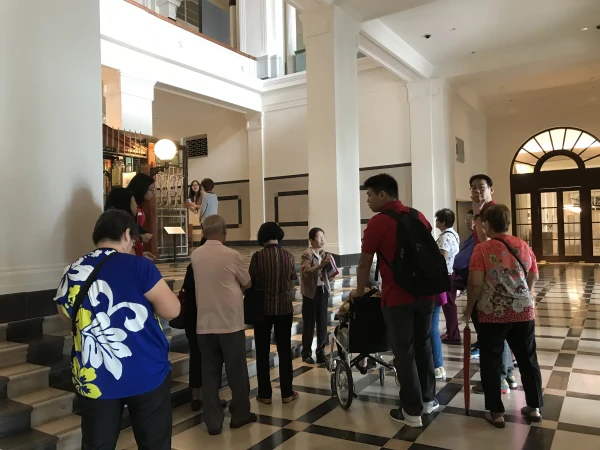
Memorable experiences
Sok Kiang: My memorable moments often come from reactions to the Gallery’s architecture. I’ve had visitors from Hong Kong who’ve compared the Gallery to the Tai Kwan Centre for Heritage and Arts in Hong Kong as it is also a conserved heritage site, a police station transformed into a museum. While visitors from Europe are often quite used to conversions like this, Chinese visitors tend to have a different perspective. When they ask how old the building is, at 90 years old, given China’s long history it is barely considered “heritage” to them. The age of the building is only significant after I explain how comparatively recent Singapore attained independence.
Jeff: There was a woman who would come to the Gallery because she had been ordered by the court to hand her granddaughter over to her ex son-in-law for weekend visitations. The judge chose the Coleman Street entrance to the Gallery as neutral territory for exchange of child custody. I don’t know if they still practice this as I only had one encounter with her. The woman related this to me while she was waiting. I think she desperately needed to talk to someone and I just happened to be volunteering as a greeter and usher on that day.
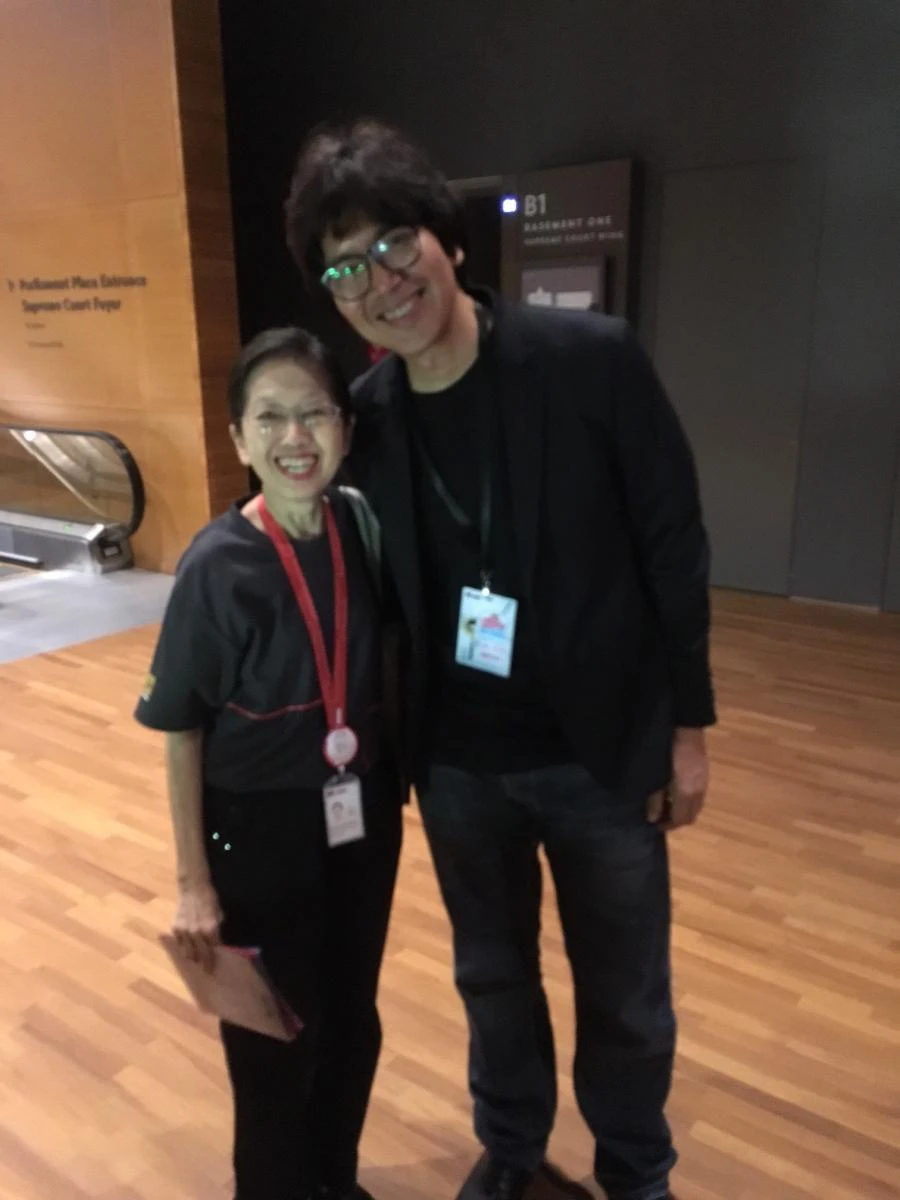 | 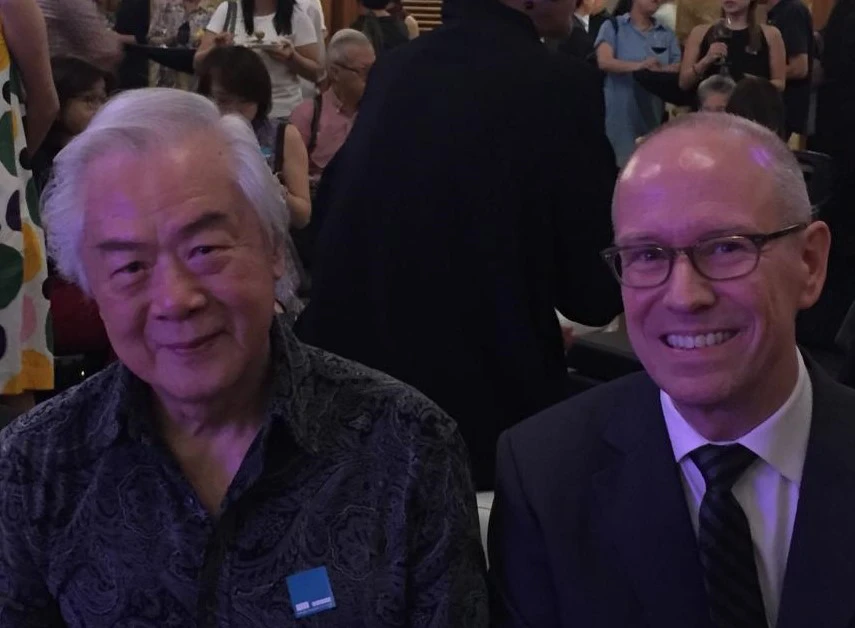 |
The value of volunteering
Sok Kiang: For me, I enjoy guiding community tours because it’s typically more challenging for them to get here. If they don’t have a guided tour, it’s easy for them to get lost. I can share many things with them on an hour-long tour and it’s time well spent for all of us.
We also appreciate the many occasions we get to meet artists such as Chua Mia Tee. I bumped into him in the Botanic Gardens once! We were also able to chat with artist Lai Kui Fang who shared the process of painting the work Lee Kuan Yew's swearing-in as Prime Minister of Singapore on 5 June 1959, 1992. It was such a privilege to listen to his stories.
Sok Oon: People know that I volunteer every day but they may not have the interest nor time. I only began volunteering after my retirement. Now, if I have time and find the work meaningful, I’ll try my best to help. If somebody needed my skills, I would volunteer to help as well. It’s a chance for me to meet different people and contribute to society. I volunteer at the Gallery almost every week because there are many things to do here besides guiding, like the many special events to attend. From the Front of House staff to workers and other volunteers, people here are friendly. We share information, updates and it makes me happy to be here.
Jeff: What I like about volunteering here is how different it is from what I do every weekday, and it’s fun. You get to engage with people from all over the world who visit the Gallery and learn so much – from training, the people you engage with on tours and the exhibitions here. There’s a sense that you are helping when you have someone on your tour who’ll respond to an artwork that speaks to them. I always include the DBS Singapore Gallery 3, the collection of (beach) glass by Simryn Gill [ed.’s note: Washed Up by Simryn Gill has been rotated out of the DBS Singapore Gallery]. A lot of people don’t cover it but I find it interesting. I had a woman on my tour who didn’t engage much but when we reached that artwork, she perked up and said that this artwork spoke to her. It’s really those little experiences that make guiding worthwhile.
Editor’s Note
More information about free guided tours of the Gallery can be found here. Find out more about the Best Friends of the Gallery (BFG) Programme here.








